#foraminifera fossil
Explore tagged Tumblr posts
Photo

Fossil Foraminifera Nummulites laevigatus – Eocene Cuisian Stage, Aisne Valley France – Genuine with COA
Presenting an exquisite fossil specimen of the foraminifera Nummulites laevigatus, a prehistoric marine microorganism from the Eocene epoch. This fossil dates specifically to the Cuisian stage and was discovered in the Aisne Valley near Soissons, France – an area renowned for its well-preserved Paleogene fossils.
Nummulites are large, lenticular foraminifera that thrived in warm shallow seas around 50 million years ago. Their intricate calcareous shells, composed of numerous chambers, are highly prized by both amateur and professional collectors for their scientific importance and distinctive, coin-like appearance (from which the genus gets its name, derived from "nummulus," Latin for "little coin").
Item Details:
Species: Nummulites laevigatus (sometimes referred to as laengryus)
Age: Eocene Epoch, Cuisian stage (~50 million years old)
Location Found: Aisne Valley, Soissons, France
Condition: 100% genuine fossil specimen with exceptional preservation
Scale: Scale cube in photo is 1cm – please refer to image for full size
Photography: What you see is what you get – the exact specimen pictured is the one you will receive
Packaging: Secure and protective packaging
This fossil is an excellent addition to any collection of microfossils or paleontological specimens and is ideal for educational use, display, or gifting. It comes with a Certificate of Authenticity to verify its provenance and authenticity.
We take pride in selecting only high-quality, well-preserved fossils. Each item is handpicked to ensure it meets our rigorous standards.
#Nummulites fossil#foraminifera fossil#Eocene fossil#Cuisian stage#Aisne Valley fossil#Soissons fossil#French fossil#microfossil#marine fossil#fossil specimen#genuine fossil#fossil with certificate#fossil from France#fossil for collection#paleontology#natural history
0 notes
Text

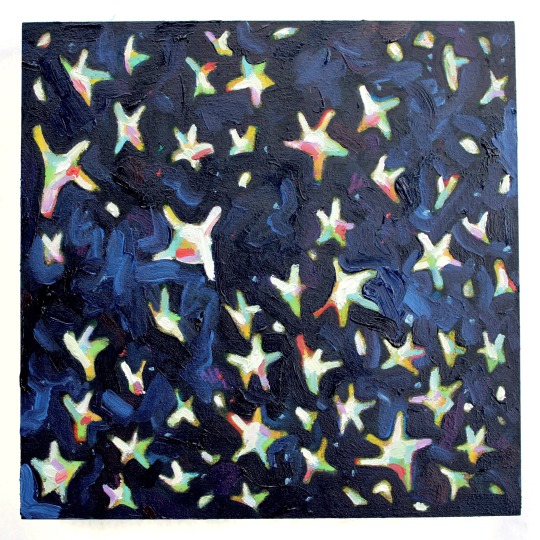
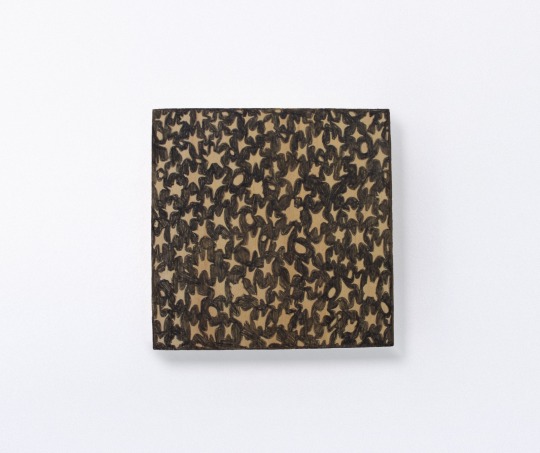

my painting/drawing commissions are open! I love working with ocean/fossil/insect themes in particular - if you have a favorite creepy crawly you want painted please send me a message! pieces around 8x10 inches priced between $40-$50 USD
#my art#art#queer artist#painting#insect#acrylic painting#bugs#insect art#entomology#deep sea#fossils#foraminifera#plankton#velvet worm
663 notes
·
View notes
Text



Missing that cosy feeling during the cold winter months? We like to sit by the fire (or at least imagine we are while working 😅) with a hot chocolate or tea in our Queeraminifera Cheat Sheet mug. The Cheatsheet is an always-handy guide through the most common Pride flags.
#foram#forammug#fossil#palaeontology#paleontology#foraminifera#nature#queer#stem#prideinSTEM#queerinstem#sciart#scienceart#scienceillustration#queerinscience#LGBTinSTEM#queerowned#lgbtqcommunity#LGBTowned#lgbtqiaowned#LGBTbusiness#LGBTQIAbusiness#queerbusiness#queerillustration#STEMmug#foraminiferamug#palaeontologymug#paleontologymug#pridemug
4 notes
·
View notes
Text
Open the door, get on the floor
Everybody walk the dinosaur
Welcome to Cretaceous Week! (Dec. 20-26)
If the Earth's history were compressed into a single year, now would mark the Cretaceous Period.

Lasting roughly 79 million years, the Cretaceous Period is the longest period of the Phanerozoic. Though, there is still some debate over when exactly it started.
Geologic periods are usually formally defined by global markers known as index fossils. These fossils are of something that are constrained in time (i.e they show up in the record/go extinct after this point) and are globally distributed. A few different methods of marking the end of the Jurassic have been proposed, ranging from specific foraminifera or ammonites to U-Pb dating of certain rocks. Few of these methods result in an answer that agrees with one another though, so we are stuck with an estimate of 145 million years ago.
The Cretaceous is home for some of the more... charismatic dinosaurs. Triceratops, Stegosaurus, Tyrannosaurus-Rex, Velociraptors, ankylosaurus, and a lot of other dinosaurs that the average child has heard of, lived during this period. Though many didn't walk the earth at the same time. Stegosaurs and Triceratops, for instance, are separated by tens of millions of years of history and would have never seen one another.
Many modern animals and plants can trace their roots back to the Cretaceous. Modern sharks and fish begin to take off in the oceans alongside sea turtles (after their respective starts in the Jurassic), the first members of the families that would become placental mammals and monotremes dug burrows in the undergrowth, and, perhaps most impactful, all flowering plants get their start here before going on to make up the grand majority of modern plants.
The landscape they traveled was a little more familiar to that of today, as Pangaea and Gondwana broke apart in more of a hurry than they had in the Jurassic. South America, India, Antarctica, and Australia all split from Africa at this time, forming the south Atlantic and Indian Oceans in the process. However, the warm climate also meant that there was little ice, even at the poles. This resulted in higher sea levels and the flooding of vast tracks of land to form shallow seas, such as the Western Interior Seaway in North America, or similar formations in Africa and Scandinavia.
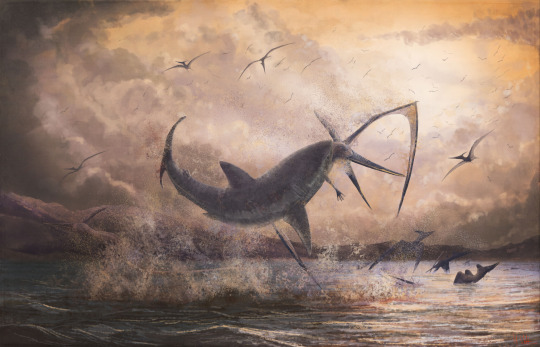
Image Source
While we don't know exactly when the Cretaceous started, we certainly know when it ended: 66 million years ago.
After a gradual decrease in biodiversity that certainly wasn't helped by the Deccan Trapps erupting in India, the non avian dinosaurs, the pterosaurs, and the Plesiosaurs went extinct with the Chicxulub impact off the coast of the Yucatan peninsula. They were not alone. In the resulting impact winter (imagine a nuclear winter sans fallout or humanity) nearly 3/4 of all plant and animal species went extinct due to a collapse of plant life making food relatively scarce. Animals that survived were typically small (less than 55 lbs) and were omnivores, insectivores, or carrion eaters. Crocodilians were an exception to this rule, since river environments rely more on detritus than land plants, and modern crocodiles are capable of going months without food if necessary. Animals on the sea floor were also relatively unaffected.
After the dust finally settled, the survivors would go on to populate the earth, and fill in the niches that dinosaurs left behind. Mammals would radiate into a dizzying variety of forms, birds would continue to take to the skies, life as we know it would slowly begin to take shape. But that is a story for the Cenozoic era.
4 notes
·
View notes
Text
I got to see some really well preserved dinosaur footprints over the weekend! Pics under the cut :3

The prints are from acrocanthosaurus and iguanodon! They date back to around 113 million years ago!!! We also have evidence that there were two iguanodons present, an adult and a juvenile.

Here’s a closer look at one of the iguanodon prints :)

I also got to do a fossil dig and I found a bunch of cool marine fossils! I was lucky enough to find a wonderfully preserved worm tube. I also found some bivalves, foraminifera, gastropods, and a sea urchin.
These are from the Cretaceous when America was split in two by the Western Interior Seaway, leaving Texas and some other states underwater. Texas being underwater is also why we have such great dinosaur footprints!
15 notes
·
View notes
Text
#2764, 2765, & 2766 - Dentalium, Laevidentalium, & Fissidentalium - Tusk Shells

Fossil scaphopods from three genera and two families.
Tusk Shells live in deeper water, buried entirely in the sediment, inhaling and exhaling water through a small aperture at the narrow end of the shell, and collecting foraminifera and other organic matter from the sediment with tiny tentacles at the other end. The largest known species is 18 cm long - Fissidentalium metivieri.
Genetic evidence suggests they're the sister group of the cephalopods, but their fossil remains only go back to the early Carboniferous. The route they took to evolve into these things remains a topic of debate.
Despite being a comparative rarity on beachs (being fairly fragile and not found in intertidal waters, usually) Māori traditionally used the shells for rings and necklaces. The shells were collected as shell money by the indigenous peoples of the Pacific Northwest, and for belts and headdresses by the Natufian culture of the Levant 15000 to 11500 years ago. Excavations at Mehrgarh in what is now Pakistan, over 500km from the coast and six millennia BCE, uncovered elaborate headbands made from Dentalium shells.
University of Otago Geology Museum, Dunedin, Aotearoa New Zealand.
#Laevidentaliidae#Laevidentalium#Dentaliidae#Dentalium#Fissidentalium#Scaphopod#tusk shell#University of Otago Geology Museum#Dunedin#Dunedin NZ
2 notes
·
View notes
Text
I wonder if there are more of these, I've been fascinated by these pictures from when I first saw them, like, a billion years ago.
If I could afford it, I would do so much micro-photography, maybe not as zoomed in as these, but definitely with my rock collection, because then I could get rid of a whole bunch of rocks lol.
On a random note, I helped out with a university summer science week for senior high school students during the main school holidays back home in AoNZ, with the geology department. One of the activities we did with kids was to collect a sandstone rock from the peninsula up the coast, bring it back, do the whole 'extract the fossil plankton (like, foraminifera or ostracods, etc.) from the rock and then set the kids to 'picking' the micro-fossils from the results. The kids were so happy just spending an hour or two randomly picking tiny fossils of this processed rock mix, and I remember being much the same during my geology undergrad. I mean, I was shite at the technical stuff, and identifying anything (I literally would rather dig up fossils and prep them, than figuring out all the science around them lol), because hyper-fixating, but it was fascinating and somewhat relaxing!
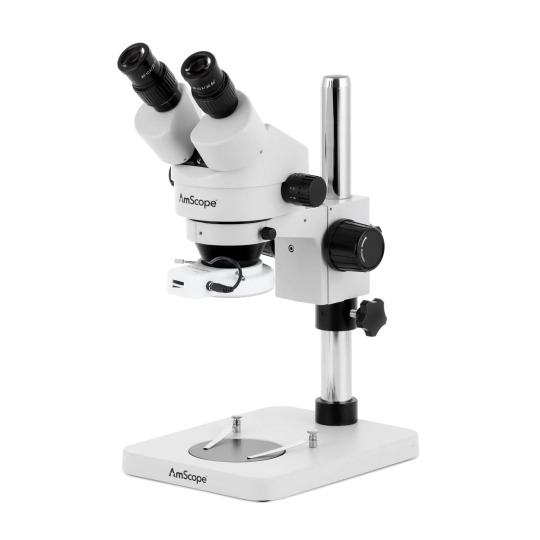
I'm a binocular/stereo microscope! I'm what you use to scout out your 'picks'. I'm going to give you headache after headache when you hyper-fixate on 'picking' microfossils...

After you've smashed up your rock, and boiled it, effectively 'disaggregating' (pulling the rock apart, like, a lot) with dish soap and some other chemical I can't remember, you're left with something similar to this. Oh, and you have to dry it out first, like, under heat lamps.
Then, spread a bit of the fossil/rock remnant mix onto a tray, like below (though, we had round ones that for the life of my I cannot find a picture of on the net #lesigh),

and using a super-fine paintbrush, (and sometimes we'd also use wooden dowels that had small metal poles with a rounded tip put into them - DIY Kiwi-style, yo...) sort through your mix.
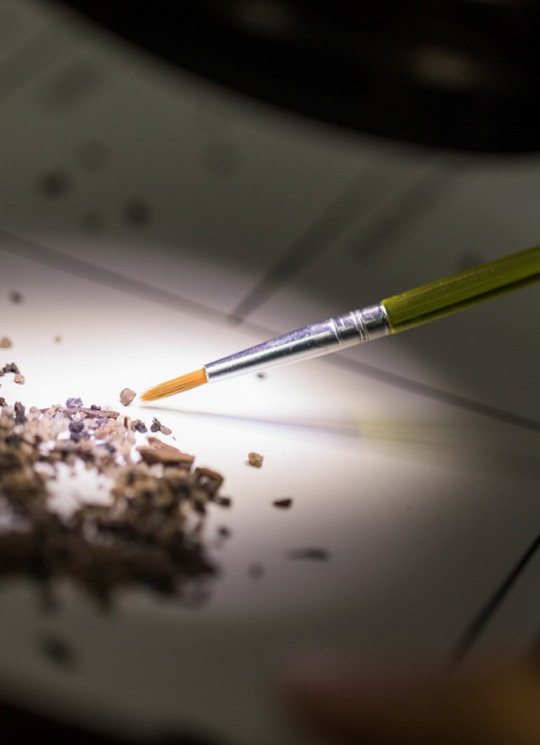
Once you've found/isolated a likely specimen that isn't just a piece of fancy sand, or shell piece, or fish bone (though you can add these to your tray if you want), and you've remembered to moisten the paintbrush tip, either with water or handy-dandy saliva from your very own mouth (you would not believe how much time this saves, though no sharing paintbrushes in these disease-ridden times), you can use said moistened brush to pick up your target and add it to your super-special micro-fossil slide!
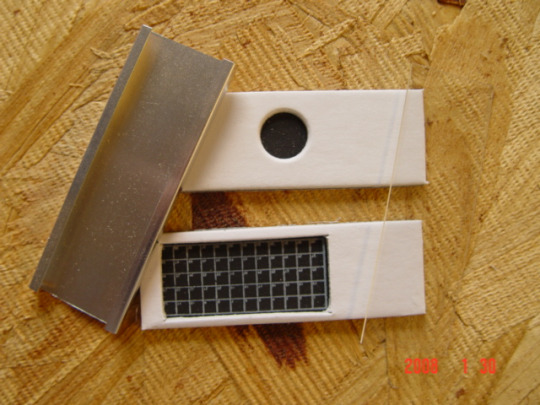
Above is an unused tray that has been pulled apart (ignore the slide with the circle, the grid one is where we are at). To put it back together once you're done 'picking', the glass slide goes overtop the cardboard 'grid' slide, and then they both slide into the metal tray. One would generally place groups of similar 'tests' (or shells) in the same grid number to identify later (or at the same time if you had mad skills).

We'd sometimes use a bit of green dye (and no, we didn't put the green dye in our mouths first...) to stain the tiny shells to help make identification easier.

Of course you ask what is the actual point of all this, other than a delightful, sometimes headache-inducing, way to pass a few hours in an activity that should be rather boring? Well. I'm going to tap into my memory and hope like hell that I recall this shite correctly. The main reason is being able to use these wee buggers to link a layer (or layers) of rock in different areas, because if you've got a couple of microfossils in one area, and the same types in another area, you can be all 'check-out-the-correlating-rocks-yo'. Or something. This is called biostratigraphy. It's especially useful if one rock layer is near a datable-by-isotype-type-rock like lava rocks, because then you can extrapolate that shite everywhere, and voila! Dateable rocks! And organised rocks!
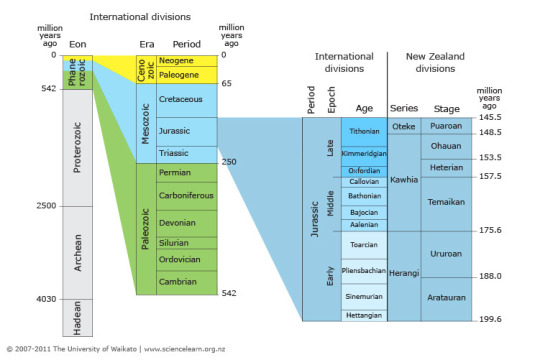
Species change though time because of that pesky evolution thing, or completely unsubscribe from life, and can be linked to age ranges (like an upper and a lower limit from when they are first found and when they are last found in a rock) in the geological time scale. Of course, the geological timescale lives to confuse, and add in localised time periods that link to localised rock formation names (I'll explain later #lesighpartdeux) that somehow tie into the epochs and eras and before long:

BUT THAT'S NOT ALL! Micro-palaeontology (or micro-pal, for those of us cool geology kids) is used extensively in the oil/gas exploration industry, for better or worse, well, worse really, but yeah, via the whole biostratigraphy schtick (they drill a core (like, a long shaft of rock) and then figure out the rock types and use microfossils to date and correlate, and then use it when they are already in an oil 'field' to check where the right rocks are, because it's not normally flat layers of rocks awaiting exploitation. It's more like a jumbled up jigsaw puzzle with some parts of the same rock up, some down, some folded/squashed together, some starting to get a little baked, and some eroded away long before the rest of the rocks were buried. Fun stuff all around!):

(I spent far too long in Publisher making this stupid representative graphic and I can already see things I've missed out *LABELS ANYONE???* but oh well...) but also there's this thing called palaeoecology AND also also palaeoclimatology that are super useful for establishing past climates and environments, which I'll go into later because this is getting stupid long and my brain is fried and needs sleep but I've got one last thing that I want to mention that may be one of the greatest things ever about geology and palaeontology and micro-pal and so on and so forth.
!!!!!OTOLITHS!!!!

WHAT ARE OTOLITHS, I HEAR YOU ASK?????
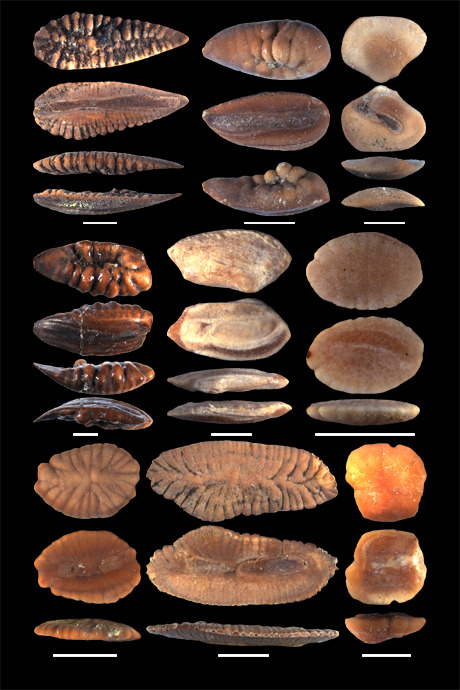
Fossilised fish ears! Who would have thought? I didn't even really think fish could hear underwater, which I believe such dimness is called BEING A MUPPET in my culture...
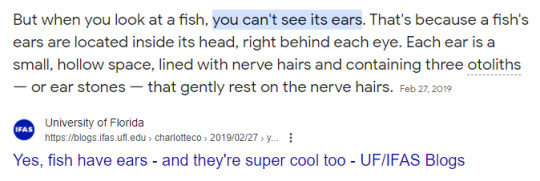
But it's true! I remember being so so so so so confused when I was picking forams for some geology lab and there were these funny shaped things in my rock mix. And they have such a variety of shapes.
And that's all for now, must sleep, will prolly revise this since it's prolly a load of crap geoscicomm but I'll get there! Happy micro-paling!

when i die i hope i come back as a beautiful microscopic granule of sand
#microfossils#micropalaeontology#palaeontolgy#binocs#foraminifera#forams#geoscicomm#geology#picking#super special micropal slides#Oh I forgot pollen#maybe next time#ooo do you know what a phytolith is?#if I've spelt it correctly lol#FISH HAVE EARS#terrible graphics#palaeoecology#palaeoclimatology#not that there's much about them#also next time#It's over!!!!
76K notes
·
View notes
Text
The history of the ocean, as told by tiny beautiful fossils
Climate change and declining biodiversity are the two biggest environmental crises facing humankind today, but predicting how they’ll play out together is tricky. Ideally, scientists would study how life on Earth responded to previous periods of drastic climate change, but the fossil record for most species is spotty. The fossils of foraminifera are an exception, however: They’re…
0 notes
Text
I thought you might enjoy some of the online resources I share with my students, so I'm posting them here!
---
Music to feel the protist vibes:
Primordial Soup for Dinner
Journey to the Microcosmos Episodes on:
Euglena
Paramecium
Amoeba
Volvox
Biointeractive Video on the life cycle of Plasmodium, the protist behind malaria.
Video on Foraminifera, and a website on using their fossils to tell the age of rocks.
Scientists encounter the radiolarian, Tuscaridium cygneum
Example of Ulva lactuca in a tidepool
Explore the kelp forest, a habitat type defined by enormous multicellular protists.
Why study red algae?
Take a glimpse into the world of slime molds!
1 note
·
View note
Text

Massive asteroid impacts did not change Earth’s climate in the long term
Two massive asteroids hit Earth around 35.65 million years ago, but did not lead to any lasting changes in the Earth’s climate, according to a new study by UCL researchers.
The rocks, both several miles wide, hit Earth about 25,000 years apart, leaving the 60-mile (100km) Popigai crater in Siberia, Russia, and the 25-55 mile (40-85km) crater in the Chesapeake Bay, in the United States - the fourth and fifth largest known asteroid craters on Earth.
The new study, published in the journal Communications Earth & Environment, found no evidence of a lasting shift in climate in the 150,000 years that followed the impacts.
The researchers inferred the past climate by looking at isotopes (atom types) in the fossils of tiny, shelled organisms that lived in the sea or on the seafloor at the time. The pattern of isotopes reflects how warm the waters were when the organisms were alive.
Co-author Professor Bridget Wade (UCL Earth Sciences) said: “What is remarkable about our results is that there was no real change following the impacts. We expected the isotopes to shift in one direction or another, indicating warmer or cooler waters, but this did not happen. These large asteroid impacts occurred and, over the long term, our planet seemed to carry on as usual.
“However, our study would not have picked up shorter-term changes over tens or hundreds of years, as the samples were every 11,000 years. Over a human time scale, these asteroid impacts would be a disaster. They would create a massive shockwave and tsunami, there would be widespread fires, and large amounts of dust would be sent into the air, blocking out sunlight.
“Modelling studies of the larger Chicxulub impact, whichkilled off the dinosaurs,also suggest a shift in climate on a much smaller time scale of less than 25 years.
“So we still need to know what is coming and fund missions to prevent future collisions.”
The research team, including Professor Wade and MSc Geosciences student Natalie Cheng, analysed isotopes in over 1,500 fossils of single-celled organisms called foraminifera, both those that lived close to the surface of the ocean (planktonic foraminifera) and on the seafloor (benthic foraminifera).
These fossils ranged from 35.5 to 35.9 million years old and were found embedded within three metres of a rock core taken from underneath the Gulf of Mexico by the scientific Deep Sea Drilling Project.
The two major asteroids that hit during that time have been estimated to be 3-5 miles (5-8km) and 2-3 miles (3-5km) wide. The larger of the two, which created the Popigai crater, was about as wide as Everest is tall.
In addition to these two impacts, existing evidence suggests three smaller asteroids also hit Earth during this time – the late Eocene epoch – pointing to a disturbance in our solar system’s asteroid belt.
Previous investigations into the climate of the time had been inconclusive, the researchers noted, with some linking the asteroid impacts with accelerated cooling and others with episodes of warmer temperatures.
However, these studies were conducted at lower resolution, looking at samples at greater intervals than 11,000 years, and their analysis was more limited – for instance, only looking at species of benthic foraminifera that lived on the seafloor.
By using fossils that lived at different ocean depths, the new study provides a more complete picture of how the oceans responded to the impact events.
The researchers looked at carbon and oxygen isotopes in multiple species of planktonic and benthic foraminifera.
They found shifts in isotopes about 100,000 years prior to the two asteroid impacts, suggesting a warming of about 2 degrees C in the surface ocean and a 1 degree C cooling in deep water. But no shifts were found around the time of the impacts or afterwards.
Within the rock, the researchers also found evidence of the two major impacts in the form of thousands of tiny droplets of glass, or silica. These form after silica-containing rocks get vaporised by an asteroid. The silica end up in the atmosphere, but solidify into droplets as they cool.
Co-author and MSc Geosciences graduate Natalie Cheng said: “Given that the Chicxulub impact likely led to a major extinction event, we were curious to investigate whether what appeared as a series of sizeable asteroid impacts during the Eocene also caused long-lasting climate changes. We were surprised to discover that there were no significant climate responses to these impacts.
“It was fascinating to read Earth's climate history from the chemistry preserved in microfossils. It was especially interesting to work with our selection of foraminifera species and discover beautiful specimens of microspherules along the way.”
IMAGE: Microscope image of silica droplets, or microspherules, found in the rock. Credit Natalie Cheng / Bridget Wade
1 note
·
View note
Photo

Fossil Foraminifera Nummulites laevigatus – Eocene Cuisian Stage, Aisne Valley France – Genuine with COA
Presenting an exquisite fossil specimen of the foraminifera Nummulites laevigatus, a prehistoric marine microorganism from the Eocene epoch. This fossil dates specifically to the Cuisian stage and was discovered in the Aisne Valley near Soissons, France – an area renowned for its well-preserved Paleogene fossils.
Nummulites are large, lenticular foraminifera that thrived in warm shallow seas around 50 million years ago. Their intricate calcareous shells, composed of numerous chambers, are highly prized by both amateur and professional collectors for their scientific importance and distinctive, coin-like appearance (from which the genus gets its name, derived from "nummulus," Latin for "little coin").
Item Details:
Species: Nummulites laevigatus (sometimes referred to as laengryus)
Age: Eocene Epoch, Cuisian stage (~50 million years old)
Location Found: Aisne Valley, Soissons, France
Condition: 100% genuine fossil specimen with exceptional preservation
Scale: Scale cube in photo is 1cm – please refer to image for full size
Photography: What you see is what you get – the exact specimen pictured is the one you will receive
Packaging: Secure and protective packaging
This fossil is an excellent addition to any collection of microfossils or paleontological specimens and is ideal for educational use, display, or gifting. It comes with a Certificate of Authenticity to verify its provenance and authenticity.
We take pride in selecting only high-quality, well-preserved fossils. Each item is handpicked to ensure it meets our rigorous standards.
#Nummulites fossil#foraminifera fossil#Eocene fossil#Cuisian stage#Aisne Valley fossil#Soissons fossil#French fossil#microfossil#marine fossil#fossil specimen#genuine fossil#fossil with certificate#fossil from France#fossil for collection#paleontology#natural history
0 notes
Text





i updated my inprnt with recent paintings and quilts i’ve made! lots and lots of niche collections including plankton, star sand, crinoid fossils and bread clips :) everyone on tumblr has been so generous in their support of my art - I am waiting to hear back about an artists residency opportunity I’ve applied for taking place this winter as well as some additional shows, and your support from my loose studio sale has allowed me to deal with application fees so thank you!!
#my art#digital art#quilting#painting#fossils#plankton#star sand#foraminifera#diatoms#bread clips#occlupanids#science art#plastic#art print#queer artist#for sale
1K notes
·
View notes
Text
Launch of Deep Sea Observatory provides new collaboration with ESRE placement.
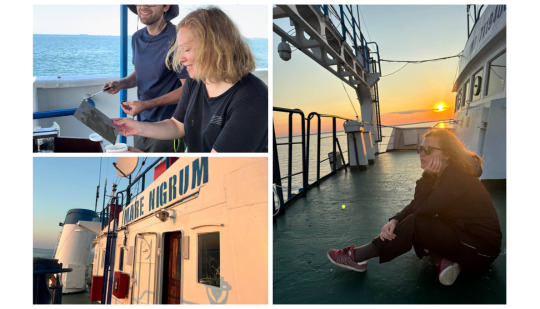
The latest DOORS cruise has seen us launch a Deep Sea Observatory alongside the EMSO EUXINUS station (EuxRoOB3) in the Black Sea, while also providing an exciting research placement opportunity for student, Olga Schmitz through our Early-Stage Researcher Exchange (ESRE).
The Deep Sea Observatory is fitted with newly developed oceanographic sensors from the National Oceanography Centre (NOC), that will continuously measure physical and chemical parameters of the sea water, helping us to understand temporal variation as we test these sensors in the open sea environment. The Observatory will remain in position until spring 2025.
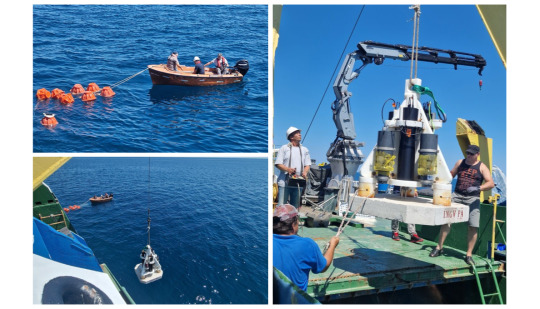
This work also provided a collaborative placement opportunity for Olga Schmitz, PhD Candidate from the Institute of Geosciences of Friedrich-Schiller University and Department of Archeology of the Max Planck Institute of Geoanthropology. She was offered the opportunity to go onboard the RV Mare Nigrum to spend 9 days at sea, led by biological group from GeoEcoMar (GEM), National Oceanography Centre (NOC) and National Institute of Geophysics and Volcanology (INGV). And together with Prof. Peter Frenzel and Diego Volosky from the Institute of Geosciences of Friedrich-Schiller University in Jena and Dr. Andrei Briceag from GeoEcoMar in Bucharest they launched a pilot project on a “Collaborative Initiative for Enhanced Water Quality Monitoring in the Black Sea Region with a use of Ostracoda and Foraminifera”.

Foraminifera are single cell organisms and are an important part of the marine food chain. They are wide-spread in marine and outer estuarine settings, are sensitive to environmental changes, and their assemblage composition and diversity can reveal information about water quality and pollution levels. Ostracoda, a group of minute Crustacea with a double valved calcified carapace, are important index fossils and proxies in geosciences, but rarely used for water quality assessment so far. They inhabit all water conditions and complement Foraminifera and diatoms as bioindicators in estuarine systems with variable salinity. And so, this research aims to correlate fauna with heavy metals and microplastics data, for example, to evaluate the current environmental situation and impacts from human activity.

This is just one example where we have matched early stage research interests with the scientific work ongoing in the project. This summer we have funded and supported 5 other placements through the DOORS Early-Stage Researcher Exchange (ESRE). This is an international programme of collaborative research mobility activities, to foster and deepen connections within and between Black Sea countries, and international partners across Europe.
youtube
Video: The above video shows sediment from a core, taken with a multi corer. The team subsamples, stains and then with a sieve they wash and dry the samples while on the ship. The idea is to investigate the samples for water quality with microfossils to look into microplastics and heavy metals.
The placements have covered a range of topics supporting students from universities all over Europe:
Olga Schmitz (Germany)- Collaborative Initiative for Enhanced Water Quality Monitoring in the Black Sea Region.
Leidy Maricela Castro Rosero (Spain) - Analysis of spatial distribution of marine litter pollution in the western Black Sea through numerical model integration and in situ measurements.
Tatiana Sitchinava (Georgia) - Towards Sustainable Coastal Communities: Understanding and Mitigating Marine Litter in Romania's Black Sea Beaches.
Alessandro Galdelli (Italy) - Advancing Marine Research through Strategic Collaboration: Integrating Cutting-edge Algorithm for Enhanced Fishing Effort Estimation in the Black Sea,
Florin Miron (Romania) - Analysing Coastal Hydrodynamics and Discharge at River Mouths: The Impact of Winds and Waves on Hydrological Processes Using SWOT Satellite Data,
Sofia Sadogurska (Ukraine) - Taxonomic studies of the Black Sea brown algae (Phaeophyceae, Heterokontophyta).
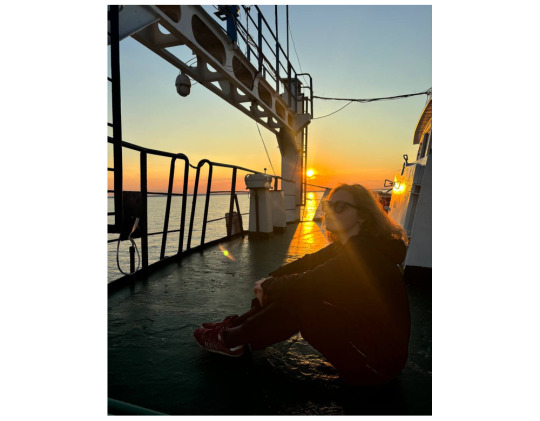
“This has been a fascinating opportunity for me, as I never worked on such a big ship before. I am very thankful to DOORS for this chance and looking forward to future collaborations, publications and sampling campaigns with Dr. Briceag and GeoEcoMar. It is the beginning of a long partnership between our research groups.” said Olga.
You can follow Olga's journey on Instagram , Facebook, LinkedIn and X, and learn more about her research.
0 notes
Text
There may be good news about the oceans in a globally warmed world
A Rutgers-led study published in Nature analyzing ocean sediment shows that ocean oxygen levels in a key area were higher during the Miocene warm period, some 16 million years ago when the Earth’s temperature was hotter than it is today. In recent decades, levels of life-sustaining oxygen in the ocean have been decreasing, raising concerns that oxygen-deficient zones in key parts of the world oceans will expand, further harming marine life. Scientists have attributed the trend to climate change-induced rising temperatures, which affect the amount of oxygen that can be absorbed from the atmosphere. “Our study shows that the eastern equatorial Pacific, which today is home to the largest oxygen-deficient zone in the oceans, was well oxygenated during the Miocene warm period, despite the fact that global temperatures at that time were higher than at present,” said Anya Hess, the lead author of the study and a Rutgers doctoral student working with Yair Rosenthal, a Distinguished Professor focused on marine and Earth sciences with the Rutgers School of Art and Sciences and the School of Environmental and Biological Sciences. Hess added: “This suggests that current oxygen loss may ultimately reverse.” The fastest rates of oxygen loss in recent decades have been in oxygen-deficient zones, and they are expected to continue to expand and become shallower, threatening fisheries by shrinking fish habitat. However, climate models diverge in their predictions of how these zones will respond beyond the year 2100, inspiring the team to investigate more. To test current climate models, researchers chose the mid-Miocene, when climate conditions were similar to those predicted for the next few centuries in the current era of climate change. Researchers examined ocean sediments deposited during the mid-Miocene in the eastern equatorial Pacific. The sediments were recovered from the seafloor by scientists aboard the National Science Foundation-funded research vessel JOIDES Resolution as part of what is now known as the International Ocean Discovery Program (IODP). The researchers isolated the fossilized remains of microorganisms the size of individual grains of sand that live in the water column called foraminifera. The scientists analyzed the chemical composition of the foraminifera, which reflects the chemical profile of the ancient ocean. They discerned oxygen levels of ancient oceans in a few ways, including using isotopes of nitrogen — forms of the element that have a different relative atomic mass — as detectors. The isotopes are sensitive to a process called denitrification that only occurs at very low oxygen levels. They also employed a method of analysis that compares levels of iodine and calcium and gives subtle readings that can differentiate between well-oxygenated conditions and moderately well-oxygenated conditions. The methods showed the area was well oxygenated during the height of Miocene warmth, even approaching modern day levels seen in the open-ocean South Pacific. “These results were unexpected and suggest that the solubility-driven loss of oxygen that has occurred in recent decades is not the end of the story for oxygen’s response to climate change,” Rosenthal said. Other authors on the study include Ken Miller, a Distinguished Professor in the Department of Earth and Planetary Sciences in the Rutgers School of Arts and Sciences, Alexandra Auderset and Alfredo Martinez-Garcia of the Max Planck Institute for Chemistry in Germany, Daniel Sigman of Princeton University and Xiaoli Zhou of Tongji University in China.
0 notes
Text
even in an essay i'm writing where the MAIN IDEA is how foraminifera are important because of their role in the fossil record as climate proxy and how their status as an indicator fossil is incredibly valuable because we can reliably look back on such a big portion of geological history by examining their composition. even when i say how they are beneficial to people, i am getting this comment...

THAT'S WHAT THE ESSAY IS ABOUT!!! THE WHOLE THING!!! I JUST WROTE 6 PAGES ABOUT WHY THEY'RE IMPORTANT TO THE ENVIRONMENT
i wish animals could be considered valuable and important to the environment solely on the fact that they are apart of it/the ecosystem and not based on how useful they are to humans.
35 notes
·
View notes